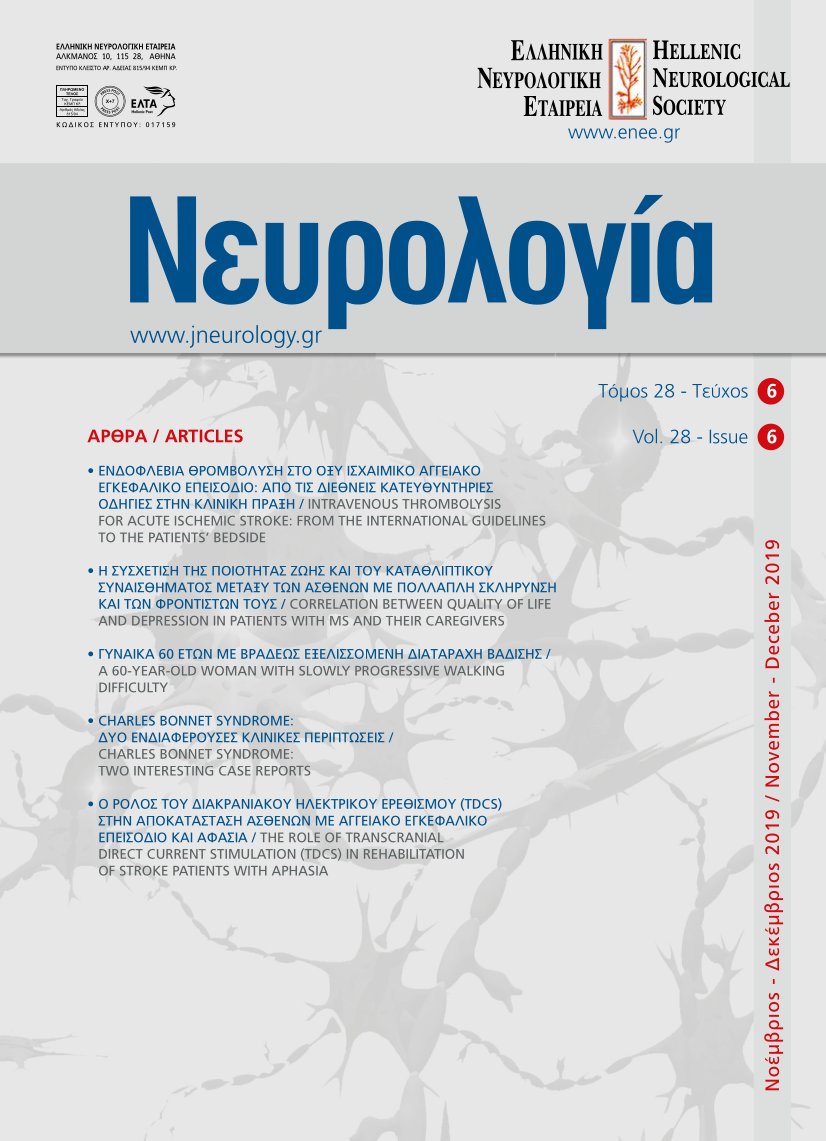Ο ρόλος του επικλινή πυρήνα στις νευρολογικές διαταραχές
Λέξεις-κλειδιά:
επικλινής πυρήνας, επιληψία, νευρολογικές διαταραχές, νόσος του Parkinson, ντοπαμίνηΠερίληψη
Ο επικλινής πυρήνας είναι το κατώτερο τμήμα του ραβδωτού σώματος και συνδέεται με το μεταιχμιακό και
το εξωπυραμιδικό κινητικό σύστημα. Ως κεντρική λειτουργικά δομή ανάμεσα στην αμυγδαλή, τα βασικά γάγγλια, τις μεσομεταιχμιακές ντοπαμινεργικές περιοχές, το ραχιαίο έσω θάλαμο και τον προμετωπιαίο φλοιό, ο
επικλινής φαίνεται να παίζει έναν τροποποιητικό ρόλο στη ροή της πληροφορίας από το αμυγδαλοειδές σύμπλεγμα προς τις περιοχές αυτές. Η ντοπαμίνη είναι ένας κύριος νευροδιαβιβαστής στον επικλινή. Ο επικλινής πυρήνας θεωρείται ως ο νευρικός διαμεσολαβητής μεταξύ κινήτρων και δράσης, έχοντας ένα ρόλο κλειδί στην πρόσληψη τροφής, στη σεξουαλική συμπεριφορά, στη συμπεριφορά με κίνητρο την ανταμοιβή, στη
σχετιζόμενη με το stress συμπεριφορά και στην εξάρτηση από ουσίες. Εμπλέκεται σε αρκετές νοητικές, συναισθηματικές και ψυχοκινητικές λειτουργίες, που αλλάζουν σε μερικές περιπτώσεις ψυχοπαθολογίας. Εμπλέκεται επίσης σε μερικές από τις πιο συχνές και σοβαρές νευρολογικές διαταραχές, όπως είναι η νόσος του
Parkinson, η επιληψία, η αίσθηση του πόνου, η χορεία του Huntington και η νόσος του Alzheimer.


